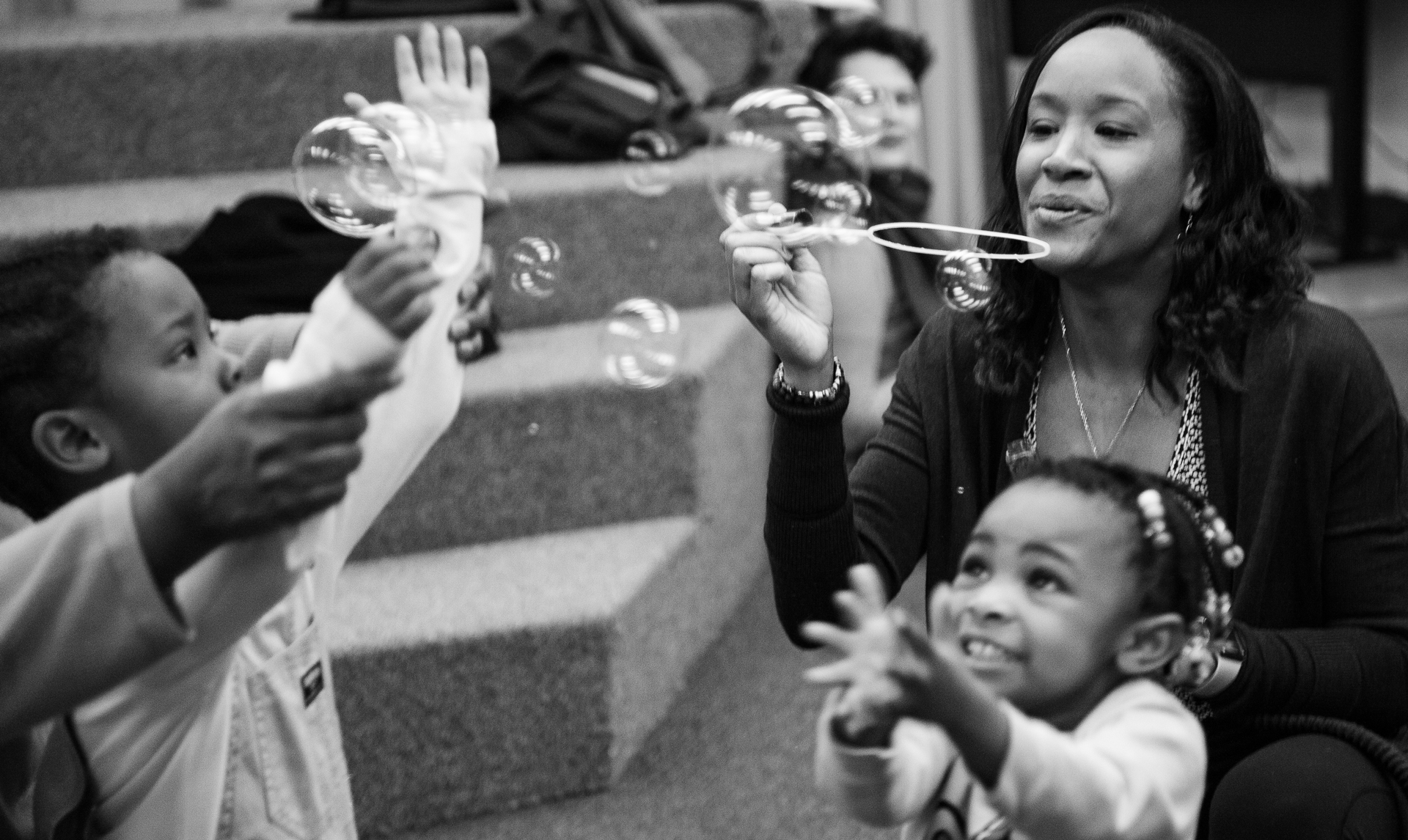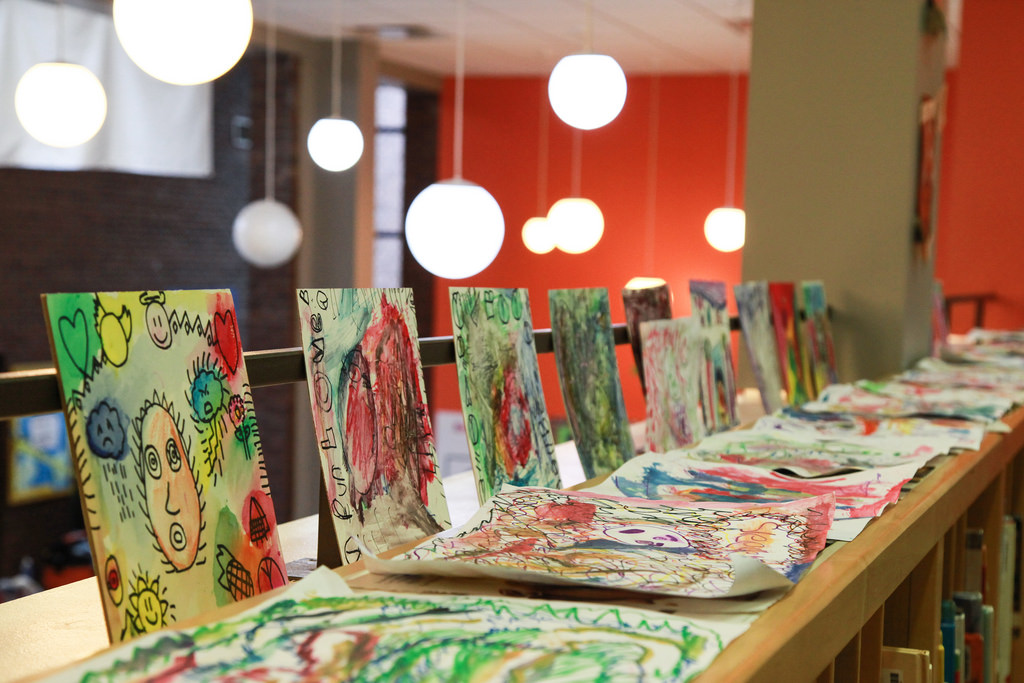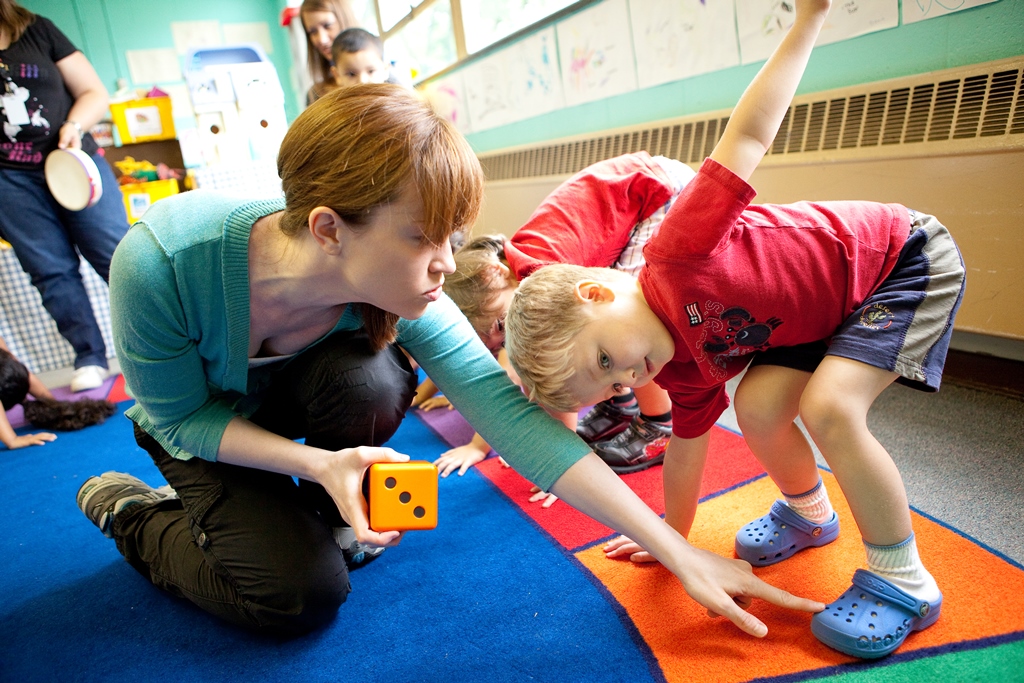Baby Artsplay!™


Baby Artsplay! Residencies
Two-Generational Programming for Infants and Toddlers
Nurturing curiosity and joy from the start!
Our Baby Artsplay™ residency model is an arts integrated program for infants and toddlers ages 0-4, and their caregivers and educators.
The program’s weekly classes use research-based arts strategies to both support the cognitive, physical, and social development of infants and toddlers as well as to build the capacity of educators and caregivers to use these teaching methods on their own. These developmentally appropriate activities include storytelling, creative movement, singing, and music-making with simple rhythm instruments.
During the residency, teaching artists work directly with children, educators, and caregivers, coaching the adults as they lead performing arts-based activities for the early learners. This collaborative, hands-on approach ensures that educators and caregivers receive effective training for using the arts in daily activities to improve learning.
Program Goals
- Stimulate vocalization and language
- Advance focus and self-regulation
- Strengthen social and emotional skills
- Tap into children’s innate sense of curiosity and desire to connect to the world around them
- Support caregivers and educators in incorporating the arts into their child's home and classroom daily routines.
Family and Caregiver Residency
About
During a Baby Artsplay!™ Caregiver residency, teaching artists parenter with caregivers and their children to develop strategies for incorporating singing, dancing, drama, and other multi-sensory activities into their child’s daily routine. This collaborative, hands-on approach helps caregivers to tap into their child's innate sense of curiosity and desire to connect to the world around them.
Types of Partner Venues
These residencies often take place in Judy Centers, Family Support (Patty) Centers, libraries, and other community-based centers.
Classroom Residency
About
During a classroom Baby Artsplay™ residency, teaching artists work directly with educators and their children in an embedded professional development model, supporting educators in learning how to integrate singing, dancing, drama, and other multi-sensory activities into their classroom routines. This collaborative, hands-on approach ensures that educators receive effective training for how to use the arts in daily activities to improve learning.
Types of Partner Venues
These residencies typically take place in child care or Early Head Start settings.
Interested in a Baby Artsplay!™ program? Start by filling out the form below!
Addressing the Five Domains of School Readiness through Arts-Integrated Strategies
Through the Baby Artsplay!™ residency model, children are exposed to a variety of arts-integrated strategies that connect with all 5 domains of school readiness, as recognized by the U.S. Department of Education. Examples of strategies in each of the domains are listed below.
Language and Literacy Development
- Drama: Develop storytelling techniques
- Music: Use instruments to respond to/enhance musical suggestions in literature, informational texts, chants, or nursery rhymes
- Dance: Use locomotor and non-locomotor movement to convey characters, actions, setting, and meaning
Cognition and General Knowledge (including early mathematics and early scientific development)
- Drama: Create sound effects
- Music: Sing/chant/use body sounds/instruments to repeat simple musical patterns
- Dance: Develop simple sequences of movement
Approaches toward Learning (e.g. initiative, curiosity, and motivation)
- Drama: Use imagination to create/develop character with the body and voice
- Music: Improvise melodies, variations, and accompaniments
- Dance: Express through movement and dance what is heard in various musical tempos and styles
Physical Well-Being and Motor Development
- Drama: Perform a role/character
- Music: Explore the use of musical instruments found in the classroom
- Dance: Explore/use dance elements like space (self space, general space, body shape, level, pathways or patterns), time (fast/slow), energy (degrees of force/quality of movement)
Social and Emotional Development
- Drama: Assume a role interacting with others
- Music: Link singing/chanting to classroom transitions
- Dance: Use props (real or imaginary) to explore space and movement












